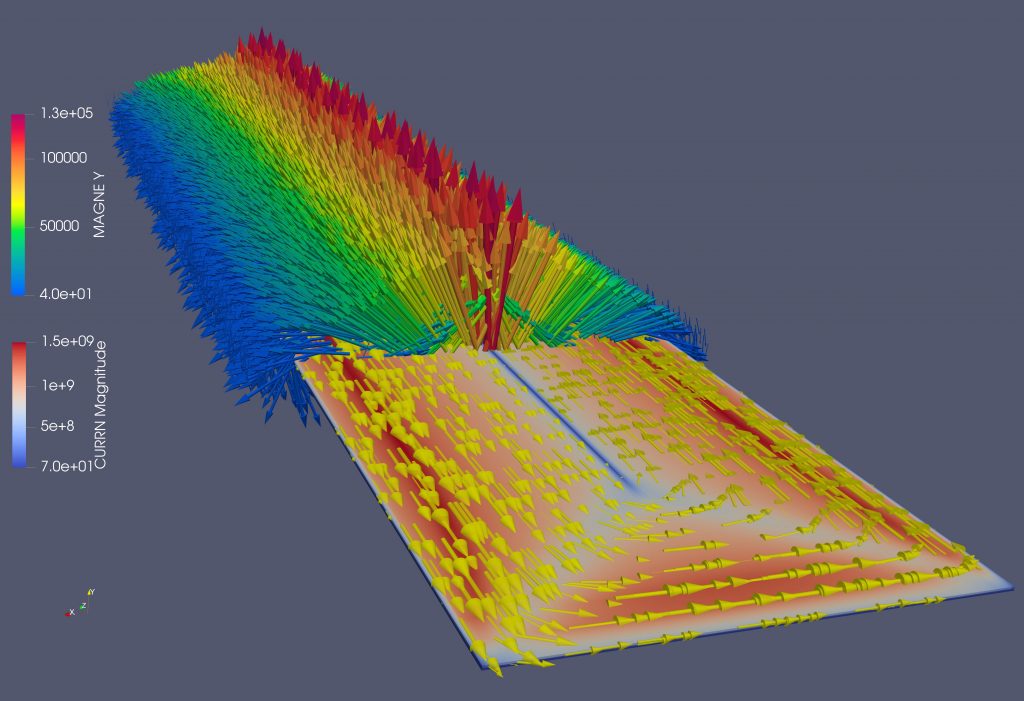
The Ewing Event is an event held yearly by the UK Magnetics Society with a different theme related to magnets every year. This year the topic was The Road to Fusion. From all applications of magnetic technology, nuclear fusion offers perhaps the greatest potential benefit. The ability to generate emission-free electricity from abundant fuels has been a dream for centuries and an achievable goal for decades. The yearly event looked at the different routes to commercial fusion.
This year, the event took place at the University of York, in York, United Kingdom on the 7th of December. It was a whole day event with many presenters from recognized institutions or projects like ITER, Tokamak Energy, UKAEA or DEMO. After the talks, a visit to York’s Plasma Institute’s facilities was organised with a guided tour of all the experiments going on.
The latest state of assembly of ITER and its next steps were presented at the event by Min Lao. Furthermore, Greg Brittles from Tokamak Energy showed the achievements and different reactors manufactured by Tokamak Energy as well as the future projects, many of them using High-Temperature Superconductors (HTS). He also presented many research results on the features of the HTS and how they change when applying forces, fields or external inputs. The state and R&D of the magnet system for DEMO project were presented together with all the design issues that need to be faced. Furthermore, UKAEA presented some new facilities that will allow improving the knowledge of this field just as several results on characterization and study of the HTS tapes.

The UKAEA presentations included a talk by Tom Barret who presented a magnetic field facility called CHIMERA that is able to reach high magnetic fields and strong pulsated fields in order to study the effect of these fields on several materials both superconducting, ferromagnetic or also more ordinary materials. Another very interesting study was presented by Simon Chislett from UKAEA on the effects of radiation on superconducting tapes. Since these tapes carry the largest amount of current to confine the plasma, it’s very relevant to see how the strong typical radiation of the reactor’s plasma will affect the structural superconducting properties and how this would cause changes on macroscopic features like the current they can carry or the field they can create.
Finally, there was a talk by Neil Mitchel from ITER explaining the whole development of Ni3Sb magnets for ITER, from its scientific usages to prototypes and finally to industrial production and how this can be related to the new High-Temperature Superconductors, which will be used in many future designs of Tokamaks and how can the scientific development and research can push the industrialization and large scale production of some materials like the High-Temperature Superconductors.
Our research group participated in this event with a talk given by Oriol Fernández together with our collaborator from ICMAB Neil Lamas showing the latest work done within the FusionCAT project on the Electromagnetic HPC module MAGNET built to simulate High-Temperature Superconductors. The talk was entitled “Experimental validation of a new HPC modelling tool for HTS” and was done in a quite original way. First, Oriol introduced the strong relationship of HPC and Fusion due to the high complexity of the multiphysics problems in this environment as well as the module itself and some of its specifications and capabilities. After that, Neil presented the experiments that were done in ICMAB for the module validation and its results, later on, Oriol focused on the results of the simulations and how they compared with the experimental data together.

The event was a perfect opportunity to present the latest work done on the AC losses validations of the MAGNET module showing the achievements in reproducing both In-Trapped Field experiments and AC losses experiments as well as the usage of a new interpretation for obtaining the temporal energy loss in a superconductor. In these validations we could observe how this new method can approximate the temporal energy losses through the magnetisation which is much easier to measure in experiments than the current density through the superconductor. All the methods used could reproduce with quite a good agreement the values obtained in the experiments and also being consistent with those found in the literature.
At this event we could attend a lot of interesting talks and get updated on the latest advances in the Superconductivity world in fusion. We could also disseminate our last work on the Magnet module and get a lot of valuable feedback from experts in the field.
This work has been funded by the FusionCAT project with reference number 001-P-001722 that has been 50% co-financed with € 1.960.963,66 by the European Fund for Regional Development of the European Union within the framework of the 2014-2020 ERDF Operational Program of Catalonia, with the support of the Generalitat of Catalonia.

